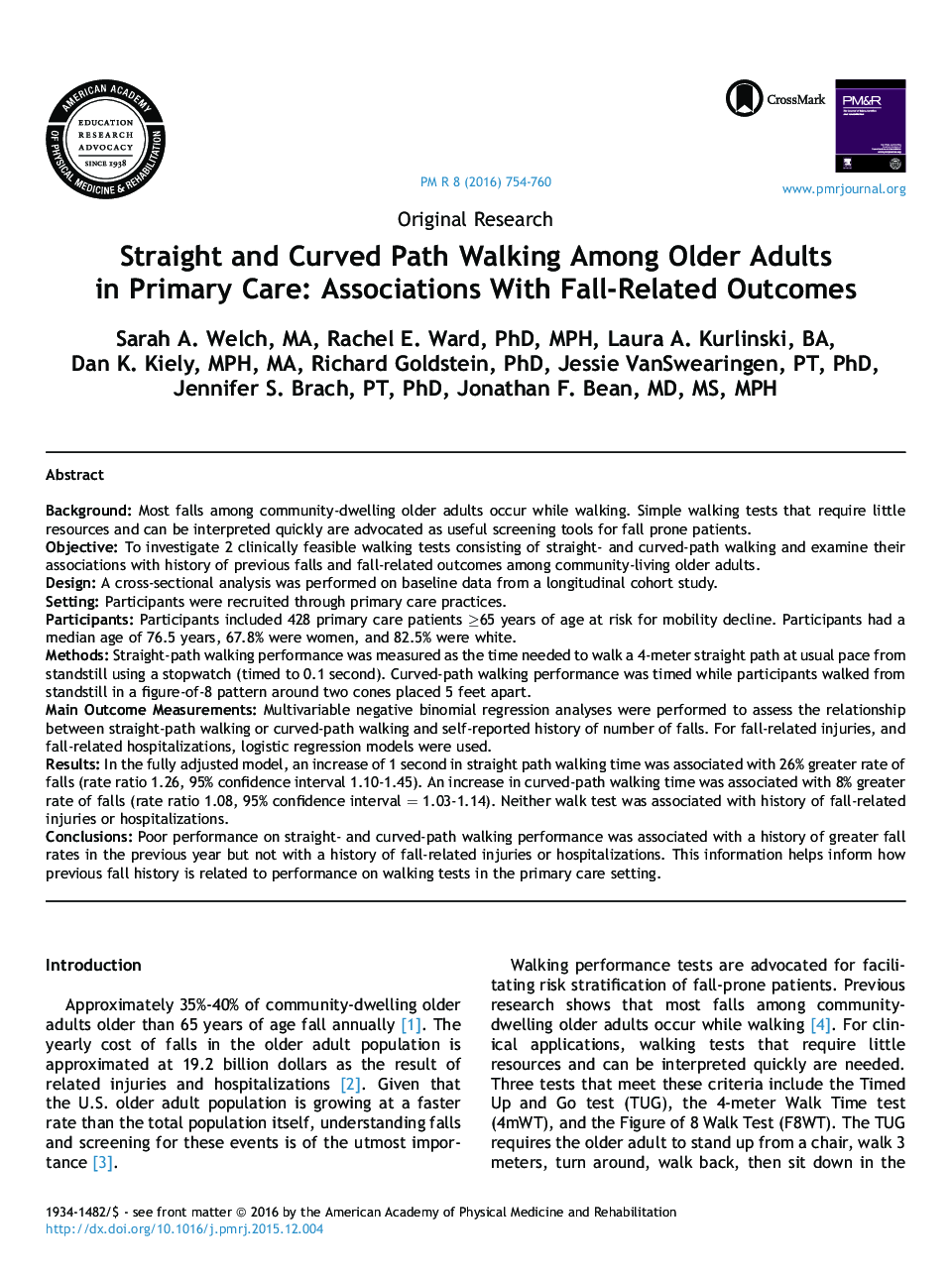| کد مقاله | کد نشریه | سال انتشار | مقاله انگلیسی | نسخه تمام متن |
|---|---|---|---|---|
| 2704617 | 1403962 | 2016 | 7 صفحه PDF | دانلود رایگان |
BackgroundMost falls among community-dwelling older adults occur while walking. Simple walking tests that require little resources and can be interpreted quickly are advocated as useful screening tools for fall prone patients.ObjectiveTo investigate 2 clinically feasible walking tests consisting of straight- and curved-path walking and examine their associations with history of previous falls and fall-related outcomes among community-living older adults.DesignA cross-sectional analysis was performed on baseline data from a longitudinal cohort study.SettingParticipants were recruited through primary care practices.ParticipantsParticipants included 428 primary care patients ≥65 years of age at risk for mobility decline. Participants had a median age of 76.5 years, 67.8% were women, and 82.5% were white.MethodsStraight-path walking performance was measured as the time needed to walk a 4-meter straight path at usual pace from standstill using a stopwatch (timed to 0.1 second). Curved-path walking performance was timed while participants walked from standstill in a figure-of-8 pattern around two cones placed 5 feet apart.Main Outcome MeasurementsMultivariable negative binomial regression analyses were performed to assess the relationship between straight-path walking or curved-path walking and self-reported history of number of falls. For fall-related injuries, and fall-related hospitalizations, logistic regression models were used.ResultsIn the fully adjusted model, an increase of 1 second in straight path walking time was associated with 26% greater rate of falls (rate ratio 1.26, 95% confidence interval 1.10-1.45). An increase in curved-path walking time was associated with 8% greater rate of falls (rate ratio 1.08, 95% confidence interval = 1.03-1.14). Neither walk test was associated with history of fall-related injuries or hospitalizations.ConclusionsPoor performance on straight- and curved-path walking performance was associated with a history of greater fall rates in the previous year but not with a history of fall-related injuries or hospitalizations. This information helps inform how previous fall history is related to performance on walking tests in the primary care setting.
Journal: PM&R - Volume 8, Issue 8, August 2016, Pages 754–760
